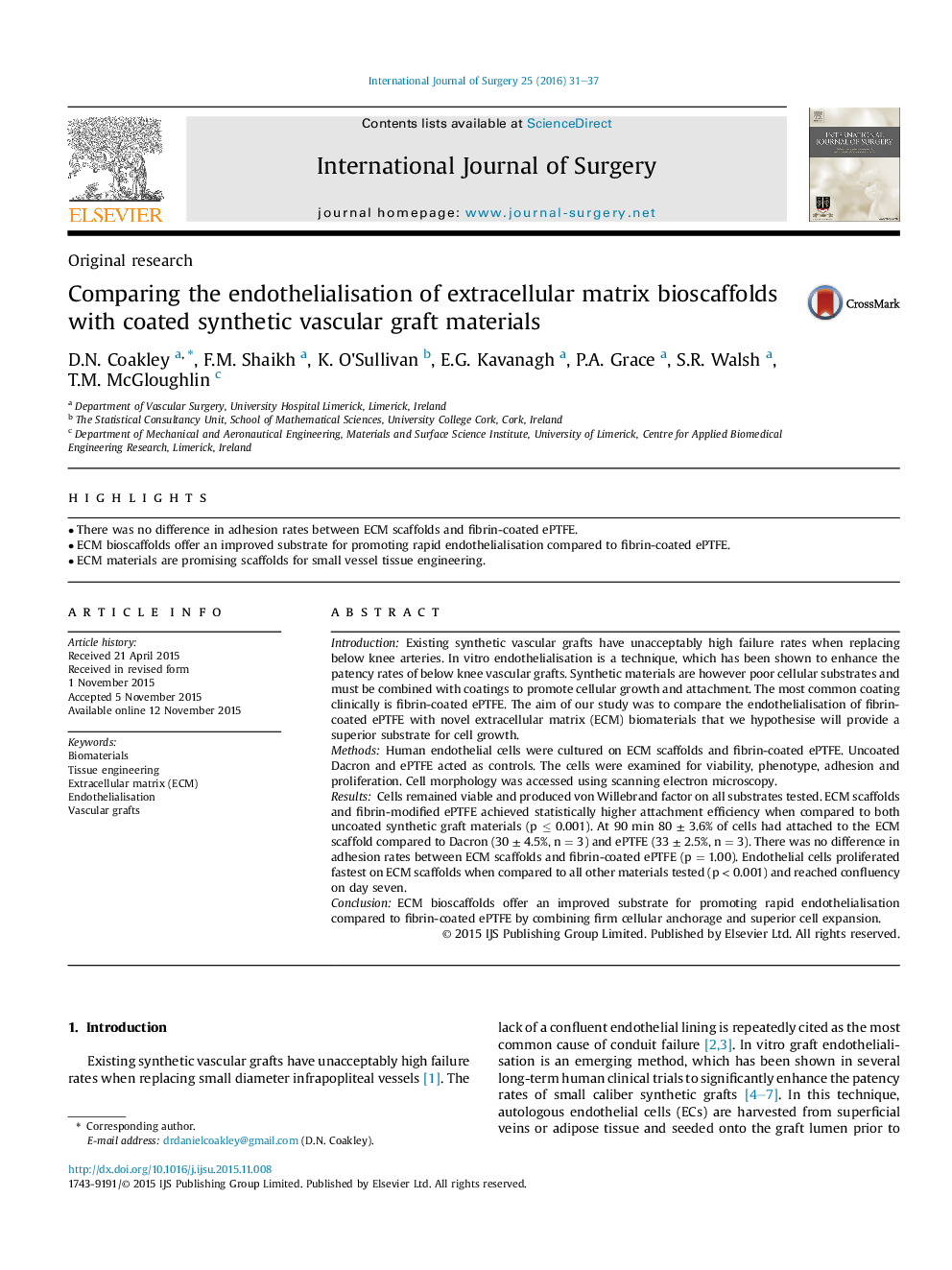| کد مقاله | کد نشریه | سال انتشار | مقاله انگلیسی | نسخه تمام متن |
|---|---|---|---|---|
| 4285585 | 1611963 | 2016 | 7 صفحه PDF | دانلود رایگان |
• There was no difference in adhesion rates between ECM scaffolds and fibrin-coated ePTFE.
• ECM bioscaffolds offer an improved substrate for promoting rapid endothelialisation compared to fibrin-coated ePTFE.
• ECM materials are promising scaffolds for small vessel tissue engineering.
IntroductionExisting synthetic vascular grafts have unacceptably high failure rates when replacing below knee arteries. In vitro endothelialisation is a technique, which has been shown to enhance the patency rates of below knee vascular grafts. Synthetic materials are however poor cellular substrates and must be combined with coatings to promote cellular growth and attachment. The most common coating clinically is fibrin-coated ePTFE. The aim of our study was to compare the endothelialisation of fibrin-coated ePTFE with novel extracellular matrix (ECM) biomaterials that we hypothesise will provide a superior substrate for cell growth.MethodsHuman endothelial cells were cultured on ECM scaffolds and fibrin-coated ePTFE. Uncoated Dacron and ePTFE acted as controls. The cells were examined for viability, phenotype, adhesion and proliferation. Cell morphology was accessed using scanning electron microscopy.ResultsCells remained viable and produced von Willebrand factor on all substrates tested. ECM scaffolds and fibrin-modified ePTFE achieved statistically higher attachment efficiency when compared to both uncoated synthetic graft materials (p ≤ 0.001). At 90 min 80 ± 3.6% of cells had attached to the ECM scaffold compared to Dacron (30 ± 4.5%, n = 3) and ePTFE (33 ± 2.5%, n = 3). There was no difference in adhesion rates between ECM scaffolds and fibrin-coated ePTFE (p = 1.00). Endothelial cells proliferated fastest on ECM scaffolds when compared to all other materials tested (p < 0.001) and reached confluency on day seven.ConclusionECM bioscaffolds offer an improved substrate for promoting rapid endothelialisation compared to fibrin-coated ePTFE by combining firm cellular anchorage and superior cell expansion.
Journal: International Journal of Surgery - Volume 25, January 2016, Pages 31–37
